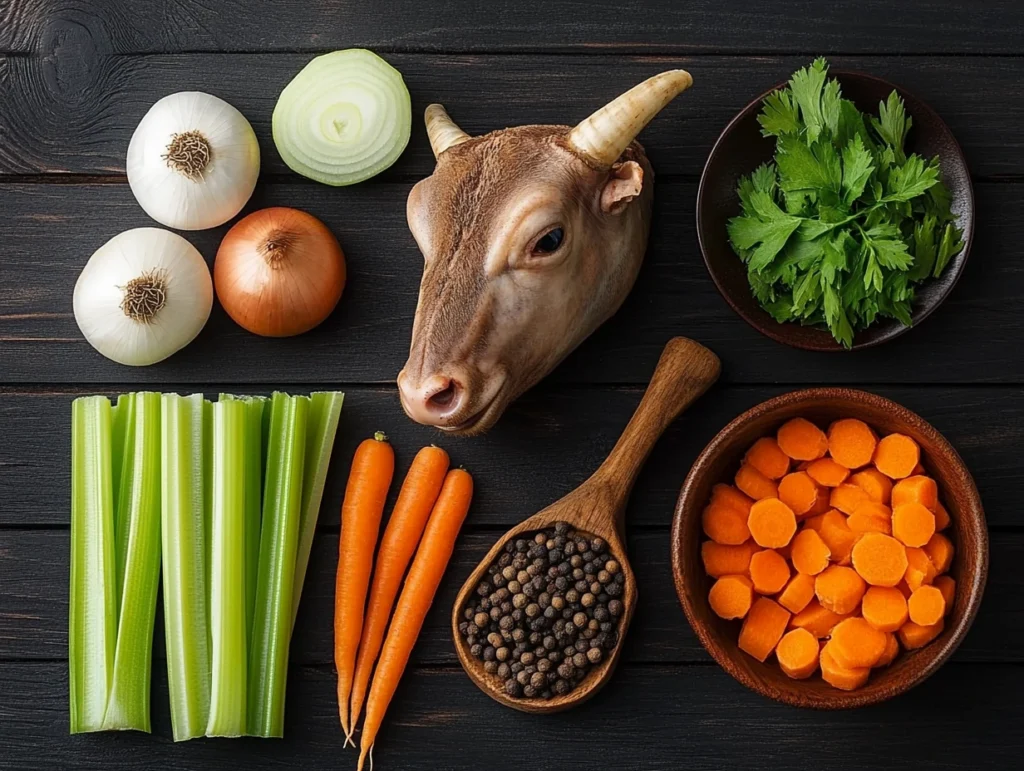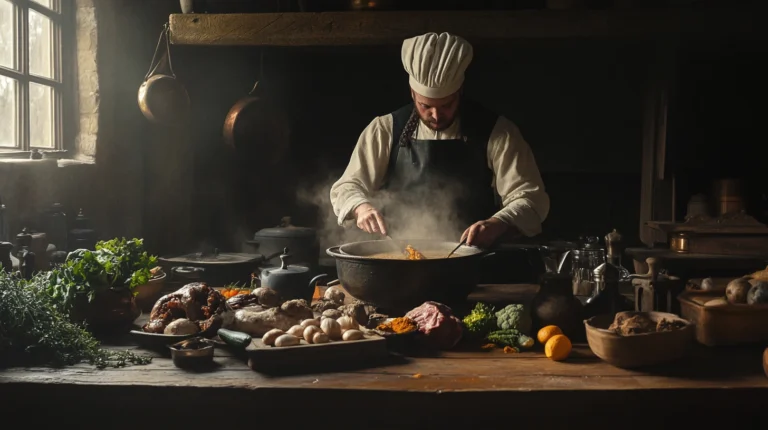Mock turtle soup has intrigued food lovers for centuries, not only for its unique flavor but also for its curious name. This dish, crafted to imitate traditional green turtle soup, became a creative solution to a culinary problem in 18th-century England. In this article, we’ll explore the origins of the name, its ingredients, and the historical context that made this dish a cultural icon. So, why do they call it mock turtle soup? Let’s dive in.
Understanding the Name
What is Mock Turtle Soup?
Mock turtle soup is a clever invention, originally designed to mimic the luxurious green turtle soup that was once a delicacy. Instead of turtle meat, it uses substitute ingredients like calf’s head to replicate the taste and texture. This innovation not only made the dish more accessible but also earned it the name “mock,” reflecting its imitative nature.
The Origin of Turtle Soup
Green turtle soup gained fame in the 18th and 19th centuries as a prized dish among the elite. Turtles, imported primarily from the Caribbean, were considered an exotic luxury. But as demand outpaced supply, the cost skyrocketed, and chefs needed a practical alternative. Thus, mock turtle soup was born, offering a flavorful replica without the hefty price tag.
The Birth of Mock Turtle Soup
The idea of creating a mock version of turtle soup wasn’t just about saving money—it was a stroke of culinary ingenuity. Cooks replaced turtle meat with calf’s head, which provided a similar gelatinous texture. Combined with rich broths, vegetables, and spices, the dish captured the essence of its inspiration while standing firmly as its own creation.
How Did the Victorian Era Shape Its Popularity?
Mock turtle soup flourished during the Victorian era, a time when thriftiness and practicality were celebrated in British households. It became a staple at dinner parties and was even immortalized in literature. Charles Dickens, for instance, referenced the dish in The Pickwick Papers, cementing its place in popular culture.
The Role of Charles Dickens in Its Legacy
Dickens not only mentioned the dish but also highlighted its cultural significance. His works often depicted mock turtle soup as a symbol of refinement blended with practicality. This portrayal resonated with readers, adding to its enduring charm.
Cultural Trends in Food Naming
The use of the word “mock” in food naming became common in the 18th and 19th centuries. It signified resourcefulness, as cooks replicated expensive or rare ingredients with more accessible ones. Mock turtle soup perfectly embodies this trend, showcasing how a creative approach could satisfy both taste and budget.
Ingredients and Recipe Evolution
Key Ingredients in Mock Turtle Soup
The heart of mock turtle soup lies in its inventive ingredients. Historically, calf’s head was used to replicate the texture and flavor of turtle meat. This choice was not random; the gelatinous quality of calf’s head closely mimics the richness of green turtle flesh. Additional staples include aromatic vegetables like onions, carrots, and celery, paired with seasonings such as nutmeg, cloves, and lemon juice to enhance the flavor.
The Importance of Broth and Texture
A rich, gelatinous broth is vital to the dish’s authenticity. By simmering bones and collagen-rich cuts of meat, the soup achieves a thick, luxurious texture. This base serves as the canvas for the other ingredients, allowing the spices and vegetables to shine.
Early Recipes: A Nod to Tradition
In 18th and 19th-century recipes, simplicity met innovation. Calf’s head was cleaned and boiled, with the meat carefully separated and chopped into bite-sized pieces. The broth was flavored with a blend of spices and thickened with a roux or flour. Adding hard-boiled eggs as a garnish became a signature finishing touch, enhancing both the presentation and taste.
Modern Interpretations of the Recipe
While the traditional version holds charm, modern variations have emerged to suit contemporary kitchens. Veal or chicken often replaces calf’s head for easier preparation. Some chefs add potatoes or tomatoes to enhance the soup’s heartiness, while others use cornstarch as a gluten-free thickening agent.
Vegetarian and Vegan Adaptations
Plant-based interpretations of mock turtle soup have gained popularity in recent years. Ingredients like jackfruit or mushrooms are used to replicate the meaty texture, while vegetable stock replaces the traditional gelatin-rich broth. These versions cater to dietary preferences while maintaining the dish’s spirit of innovation.
Regional Variations Across the Globe
Mock turtle soup has evolved differently across regions. In the United States, veal-based recipes became the norm, while in parts of Europe, the addition of unique spices or local vegetables gave the dish a distinct twist. Despite these differences, the essence of the recipe—a creative imitation of turtle soup—remains intact.

Cultural Significance and Legacy
A Symbol of Ingenuity
Mock turtle soup isn’t just a dish; it’s a testament to creativity in the face of scarcity. In 18th-century England, when the elite dined on green turtle soup, the less affluent improvised. By substituting turtle meat with affordable alternatives like calf’s head, cooks demonstrated remarkable ingenuity. This resourcefulness gave the dish a reputation for being both practical and sophisticated.
Mock Turtle Soup in Literature
This iconic dish found its way into literature, most famously in Alice’s Adventures in Wonderland by Lewis Carroll. The whimsical “Mock Turtle” character humorously embodied the dish’s nature—an imitation with charm and substance. Such cultural references helped immortalize the soup, making it a symbol of both creativity and humor.
Why Did Its Popularity Decline?
Despite its early acclaim, the dish’s prominence dwindled over time. Changing culinary trends, the availability of new ingredients, and evolving tastes contributed to its decline. Today, while less common, mock turtle soup remains cherished in certain regions and among culinary enthusiasts who appreciate its historical roots.
A Niche but Respected Dish
Mock turtle soup still holds a place in traditional cooking. It appears on menus in heritage restaurants and at food festivals celebrating classic recipes. For those curious about its taste and history, trying this soup can be a journey back in time to an era of inventive cooking.
Preserving Culinary History
Efforts to document and share mock turtle soup recipes are essential for preserving its legacy. From historical cookbooks to food blogs, this dish is celebrated as a piece of culinary history. Modern chefs and historians alike emphasize its importance, ensuring that its story continues to inspire future generations.
Mock Turtle Soup’s Enduring Appeal
Though its heyday may have passed, the appeal of mock turtle soup endures. It serves as a reminder of how creativity can overcome limitations, transforming a challenge into an opportunity. The dish continues to captivate with its rich flavors and fascinating history.
Mock Turtle Soup Today: A Modern Connection to the Past
Mock turtle soup may no longer dominate dinner tables, but it still captures the curiosity of food enthusiasts and chefs alike. This dish, steeped in history, has found a niche audience that values its cultural significance and the creativity behind its origins. Today, it serves not only as a culinary delight but also as a conversation starter about the art of adaptation in food.
Where Can You Find Mock Turtle Soup?
Mock turtle soup is a rare gem in the culinary world. However, it can still be enjoyed in specific contexts:
- Heritage Restaurants: Some traditional English or American restaurants offer this dish as part of their historical menus. For instance, in cities with a strong colonial history, mock turtle soup remains a staple at themed dining events.
- Food Festivals: Heritage food festivals often include mock turtle soup as a demonstration of 18th and 19th-century cooking techniques. These events provide an opportunity to taste and learn about the dish’s history.
- Home Cooks and Enthusiasts: Many food enthusiasts, inspired by its story, recreate the soup using either traditional or modern adaptations. Cooking classes or online recipe communities might also delve into its preparation.
How Modern Cooks Are Adapting the Recipe
The modern versions of mock turtle soup are just as creative as their predecessors. While calf’s head might no longer be a common choice, substitutes like veal, chicken, or even plant-based proteins make the dish approachable for contemporary kitchens.
Some chefs embrace its historical roots while catering to evolving tastes:
- Vegetarian-Friendly Options: Jackfruit or mushrooms are used to replicate the meaty texture, while vegetable stocks replace gelatin-rich broths.
- Simplified Recipes: Quick and accessible recipes rely on pre-prepared stocks and easy-to-source meats.
- Global Influences: Spices and herbs from other cuisines, such as paprika or turmeric, are incorporated to create unique twists on the classic.
The Nostalgic Appeal of Mock Turtle Soup
For those who appreciate food with a story, mock turtle soup offers a deep sense of nostalgia. Whether enjoyed as a reminder of bygone eras or as a lesson in culinary resourcefulness, the dish evokes a sense of connection to the past.
Cooking or tasting this soup can feel like stepping back in time, engaging with the creativity and resilience of earlier generations. As the world moves toward more sustainable and resourceful cooking, the legacy of mock turtle soup continues to inspire.
This additional section bridges the dish’s historical roots with its relevance today, inviting readers to explore it as both a meal and a story worth savoring. Let me know if you’d like further enhancements!

FAQs About Mock Turtle Soup
Why do they call it mock turtle soup?
The name comes from its purpose—to imitate green turtle soup. Since turtle meat was rare and expensive, cooks in 18th-century England used alternative ingredients, such as calf’s head, to replicate its flavor and texture. The term “mock” reflects this substitution.
What does mock turtle soup taste like?
Mock turtle soup is savory and rich, with a unique combination of flavors. The meat provides a gelatinous texture, while spices like cloves and nutmeg add warmth. Lemon juice or zest often brightens the dish, giving it a balanced depth of flavor.
Is mock turtle soup still popular today?
While less common, the dish retains its cultural significance and is still enjoyed in some traditional kitchens and heritage restaurants. It is particularly valued by food historians and culinary enthusiasts.
What are the main ingredients in mock turtle soup?
The traditional recipe includes calf’s head, a rich broth, vegetables like onions and carrots, spices such as nutmeg and cloves, and garnishes like hard-boiled eggs. Modern versions may use veal, chicken, or plant-based substitutes.
Can mock turtle soup be made vegetarian?
Yes! Vegetarian versions use ingredients like mushrooms or jackfruit for texture, along with vegetable stock for the base. These adaptations maintain the dish’s essence while catering to dietary preferences.
What is the cultural significance of mock turtle soup?
Mock turtle soup symbolizes creativity and resourcefulness. It also holds a place in literature, such as Alice’s Adventures in Wonderland, where the “Mock Turtle” character humorously reflects its playful nature.
Conclusion: Why Mock Turtle Soup Endures
Mock turtle soup is more than just a recipe; it’s a reflection of culinary creativity, historical context, and cultural resilience. Born out of necessity in 18th-century England, this dish exemplifies how cooks transformed limitations into opportunities, crafting a flavorful alternative to the prized green turtle soup. Its legacy extends beyond the kitchen, finding a place in literature, pop culture, and food history.
Today, while less prevalent, mock turtle soup continues to intrigue those who encounter it. Whether appreciated for its rich taste, historical significance, or inventive origins, this dish remains a testament to the power of adaptation in the culinary arts. Exploring its story offers a chance to savor not just the flavors but also the creativity and culture of a bygone era.
Mock turtle soup reminds us that even in challenging times, innovation can turn the ordinary into the extraordinary.

